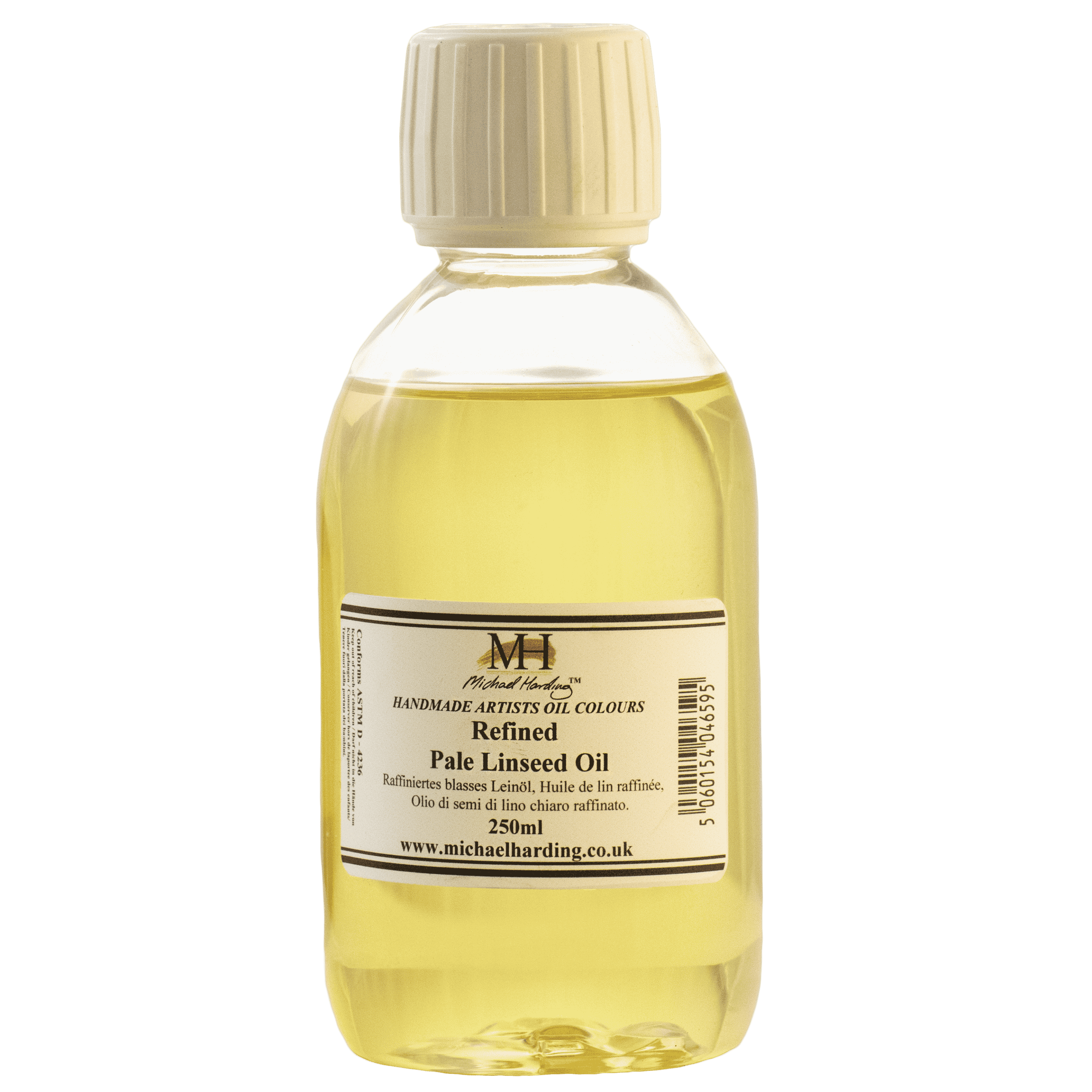Oils – For Oil Painting
Refined Pale Linseed Oil
Ⓥ VEGAN
This is our very own linseed oil! Of all the oils, we use linseed because it produces the strongest of paint films, thus helping to ensure your painting’s longevity. Alkali Refined Pale Linseed Oil is a pale oil extracted from the seeds of the flax plant. When mixed with oil paint, linseed oil also increases the paint’s gloss and transparency, while thinning the paint so that it flows more easily and discourages brushmarks. Linseed oil will slow the drying time of the paint, making it suitable for use with dry ground pigments.
Guide to Use:
You can add linseed oil to your oil paints to increase flow; however, an excess will lead to some
yellowing due to the natural colour of the oil. Apply the paint layers thinly to avoid other
defects of excess, such as wrinkling.
During the winter months, it is entirely normal for linseed oil to undergo a process known as clouding or thickening due to the lower temperatures. Linseed oil contains fatty acids that can solidify or become more viscous in colder conditions. This natural occurrence does not affect the quality of the oil; however, it can make application challenging. To address this issue, simply warm the linseed oil before use. Placing the container in a warm water bath or exposing it to a slightly elevated temperature will help restore the oil to its liquid state, making it easier to apply and ensuring that it maintains its desirable properties. This simple step allows for a smoother application of linseed oil, preserving its effectiveness.

SAFETY NOTE: Soft materials that have absorbed linseed oil should be stored in sealed containers, as the oil will oxidise when exposed to air. This chemical reaction releases so much heat that rags may spontaneously combust. Make sure the lid of the container is closed securely and stored in a cool place. Brushes and tools used with linseed oil should be cleaned thoroughly with white spirit.
